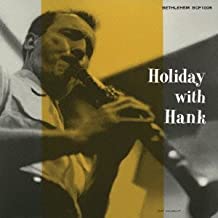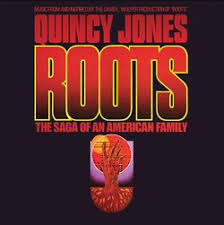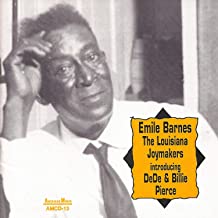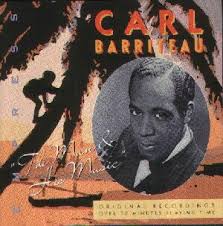
Daily Dose Of Jazz…
Hank D’Amico was born on March 21, 1915 in Rochester, NY and was raised in Buffalo, New York. He began playing professionally with Paul Specht’s band in 1936. That same year, he joined Red Norvo.
1938 saw Hank begin his radio broadcasts with his own octet before returning briefly to Norvo’s group in 1939. He played with Bob Crosby’s orchestra in 1940 and 1941, then had his own big band for about a year. He had short stints in the bands of Les Brown, Benny Goodman and Norvo again before working for CBS in New York.
D’Amico found time to play with Miff Mole and Tommy Dorsey, and spent ten years as a staff musician for ABC, before playing with Jack Teagarden in 1954. From that point he mostly worked with small groups, infrequently forming his own band. He played at the 1964 World’s Fair in New York with The Morey Feld trio.
Clarinetist Hank D’Amico passed away on December 2, 1965.
More Posts: bandleader,clarinet,hitory,instrumental,jazz,music

Daily Dose Of Jazz…
Victor Ash was born in East London, England on March 9, 1930, of Jewish ancestry and began playing professionally in 1951 when, with Tubby Hayes, he joined the band of Kenny Baker, with whom he played until 1953. Following this association, Ash played with Vic Lewis from 1953–56, then accompanied Hoagy Carmichael and Cab Calloway on their English tours.
Leading his own group, he became a favourite in the Melody Maker fan polls of the 1950s. Concurrently he had a radio program called Sunday Break, which discussed jazz and religion. In 1954, the Vic Ash Quartet recorded with US singer Maxine Sullivan in London. Ash toured the U.S. in 1957 and returned to play with Lewis in 1959. That same year his ensemble was the only one representing British jazz at the Newport Jazz Festival.
Ash remained a mainstay on the British jazz scene for decades, playing in small and large ensembles including the BBC Big Band. He accompanied Frank Sinatra on his tours in Europe and the Middle East, from 1970 until Sinatra’s death.
He released many albums for Pye, Nixa and MGM, mostly in the mainstream jazz tradition. Saxophonist and clarinetist Vic Ash, who co-authored his autobiography I Blew It My Way in 2006, passed away on October 24, 2014.
More Posts: bandleader,clarinet,history,instrumental,jazz,music,saxophone

Daily Dose Of Jazz…
William Earnest Green was born on February 28, 1925 in Kansas City, Kansas and learned to play the alto saxophone at age ten, picking up the clarinet when he was twelve. He eventually learned to play most varieties of saxophone, clarinet, and flute.
Serving in the military until 1946, Green began working at a club called Small’s in Kansas City. Relocating to Los Angeles, California in 1947 he enrolled at the Los Angeles Conservatory of Music and Arts, and graduating in 1952 remained on staff as an educator until 1962. He also ran a music education studio on La Brea Avenue in Los Angeles for many years.
During his early career Bill played with Gerald Wilson, and began working with Benny Carter in the latter half of the 1950s. From 1959 to 1962 he played in Louie Bellson’s big band, then went to work extensively as a section player in the bands of Quincy Jones, Henry Mancini, and Buddy Rich. He would accompany vocalists such as Frank Sinatra, Tony Bennett, Nat King Cole, Nancy Wilson, and Dionne Warwick.
Through the mid to late Sixties he played the Monterey Jazz Festival with Gil Fuller, worked with Oliver Nelson, and then Blue Mitchell. The 1970s saw him performing or recording with Gene Ammons, the Capp-Pierce Juggernaut, Ella Fitzgerald, Sonny Rollins, and Sarah Vaughan. He continued working with the Capp-Pierce Orchestra in the early 1980s, as well as with Lionel Hampton, Woody Herman, and the Clayton-Hamilton Jazz Orchestra.
His most notable recordings are Benny Carter’s Aspects and the Quincy Jones recording of the soundtrack for Roots. Multi-instrumentalist Bill Green, who played most saxophones, clarinet and flute, passed away on July 29, 1996. His personal papers and recordings are archived at University of California, Los Angeles..
More Posts: clarinet,flute,history,instrumental,jazz,music,saxophone

Daily Dose Of Jazz…
Emile Barnes was born on February 18, 1892 in New Orleans, Louisiana. His first instrument was a toy fife. He soon moved on to the flute, and then the clarinet, which was given to him by the great Bunk Johnson. He studied under Lorenzo Tio Jr., Alphonse Picou, George Baquet, and Big Eye Louis Nelson Delisle. By 1908, at sixteen, he became active professionally in New Orleans, Lousiana by 1908, he was long well regarded locally for his bluesy and distinctively individualistic style.
He played with the Chris Kelly band from the late 1910s through the 1920s. He never became widely known to jazz fans outside of New Orleans until he made recordings during the revival era for American Music Records. He performed at the opening night of Preservation Hall and also in his later years.
In the 1930s he played with Wooden Joe Nicholas, and in the 1940s with Kid Howard. During this time, Barnes also had standing gigs with Lawrence Toca at the Harmony Inn, a New Orleans venue, and with Billie and DeDe Pierce at Luthjen’s dancehall. As a brass band musician, he performed with the Superior and Olympia Brass Bands, among others.
Emile was featured on several Folkways Records New Orleans compilation albums during the 1950s, and again in the early 60s as a solo artist. When British trumpeter Ken Colyer jumped ship and visited New Orleans in 1953, he recorded with a pick-up band including Barnes.
Clarinetist Emile Barnes, ragtime and brass band player, passed away on March 2, 1970 in his hometown.
More Posts: clarinet,history,instrumental,jazz,music

Daily Dose Of Jazz…
Carl Alrich Stanley Barriteau was born on February 7, 1914 in Trinidad, but was raised in Maracaibo, Venezuela. He played tenor horn in Trinidad from 1926 to 1932, before playing the clarinet in a local police band from 1933 to 1936. At the same time, he also played in Port of Spain with the Jazz Hounds and the Williams Brothers Blue Rhythm Orchestra.
Moving to London, England where he played in Ken Johnson’s West Indian Swing Band. Melody Maker named him “best clarinetist” for seven consecutive years. In the 1940s Carl led his own group on recordings for Decca Records.
He did several USO tours for American troops from 1958 to 1966. He emigrated to Australia in 1970. Clarinetist Carl Barriteau passed away on August 24, 1998, in Sydney, Australia.
More Posts: clarinet,history,instrumental,jazz,music



